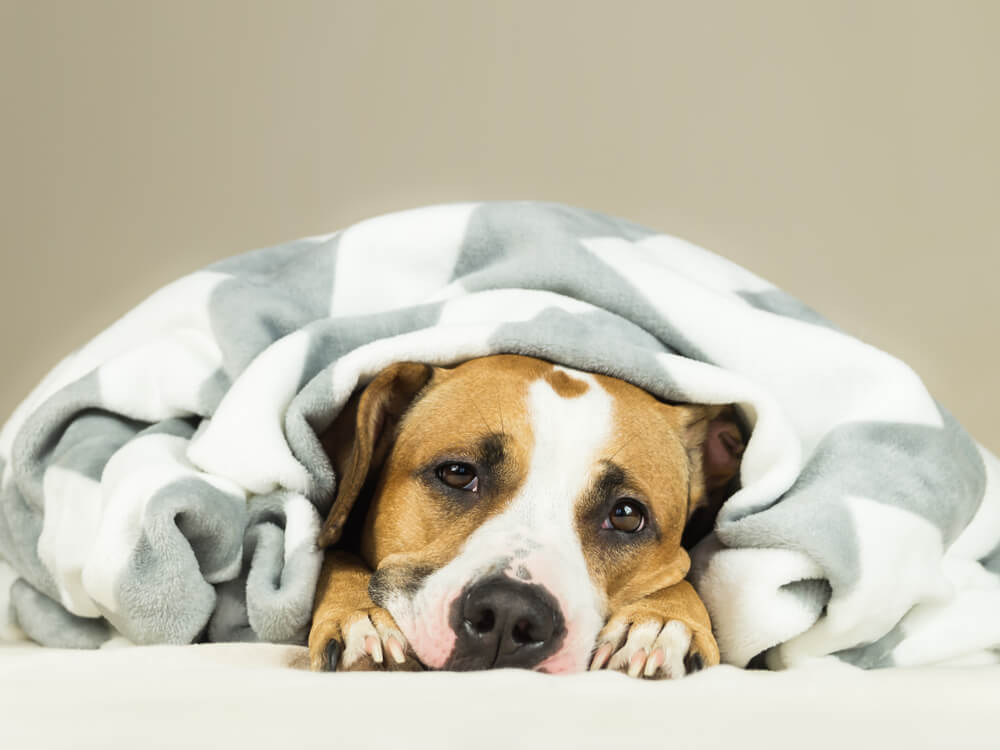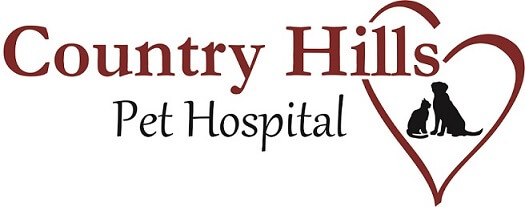
With the 4th of July quickly approaching, many dog parents are dreading the loud fireworks that accompany the holiday’s celebration. Some dogs experience intense anxiety symptoms at the sound of a loud noise such as fireworks or thunderstorms. Dogs that have a noise anxiety or phobia can be seen trembling, pacing, whining, barking, hiding, or doing destructive behaviors to try to escape the situation.
How can I help my dog cope with noise anxiety?
Each dog is different. There is no one sure-fire way to try and help your dog deal with noise-related anxiety, but below are some options you can try:
- Give your dog a safe and enclosed place to hide or retreat. If your dog is crate-trained and enjoys being in the crate, you may make this option available to him during a storm or fireworks. You can also try putting a large blanket over the crate to block out light and sound stimuli. Do not force your dog into a small space if he or she is reluctant.
- Placing pressure on your dog’s body such as leaning on him/her or placing a firm hand on the head or back. This can give some dogs a sense of security.
- Blocking out the auditory or visual stimulus can also help some dogs. There are eye covers and dog headphones that have been developed for this exact purpose.
- Playing classical music during thunderstorms or fireworks can help distract and calm.
- Desensitization involves exposing your dog to the sound that elicits a fear response, but the sound is toned down at first and then gradually increased so the dog can get used to it. Treats and praise should be given if the dog hears the sound and does not show an anxiety reaction.

Are there medications that can help?
There are numerous pharmaceutical options that can help prevent or alleviate the symptoms associated with noise anxiety. As with any medication, there can be side effects or interactions with other drugs, so always consult with your veterinarian as to what medication would be best for your dog.
Some of the most common options are listed below:
- Sileo is a newer product that is the only FDA-approved medication labeled specifically for dogs with noise aversion. This medication is a gel that is placed between the dog’s cheek and gums to allow for absorption transmucosally. It takes full effect within 30-60 minutes and lasts anywhere between 2-3 hours. It can be redosed every 2 hours (up to five times daily) if needed. Side effects can include drowsiness, sedation, or vomiting. Wear gloves when administering this medication.
- Benzodiazepines are a class of drug that is commonly used for storm phobias. They should be given 30-60 minutes prior to the noise stimulus and can be re-dosed every 6-12 hours as needed. Side effects can include sedation, lethargy, disinhibition, paradoxical excitement, and the possibility to form a dependence. This class of medication should be used with caution in animals that have kidney or liver disease.
- Trazodone is an anti-anxiety medication that can be given 1 hour prior to noise stimulus and has a longer duration of action. This medication can be re-dosed every 8-24 hours as needed. Side effects can include sedation, temporary behavior change, or vomiting.
These are some of the more common medications used, but this is not a comprehensive list.
Please contact Country Hills Pet Hospital for more information on what medication may work best for your dog!
